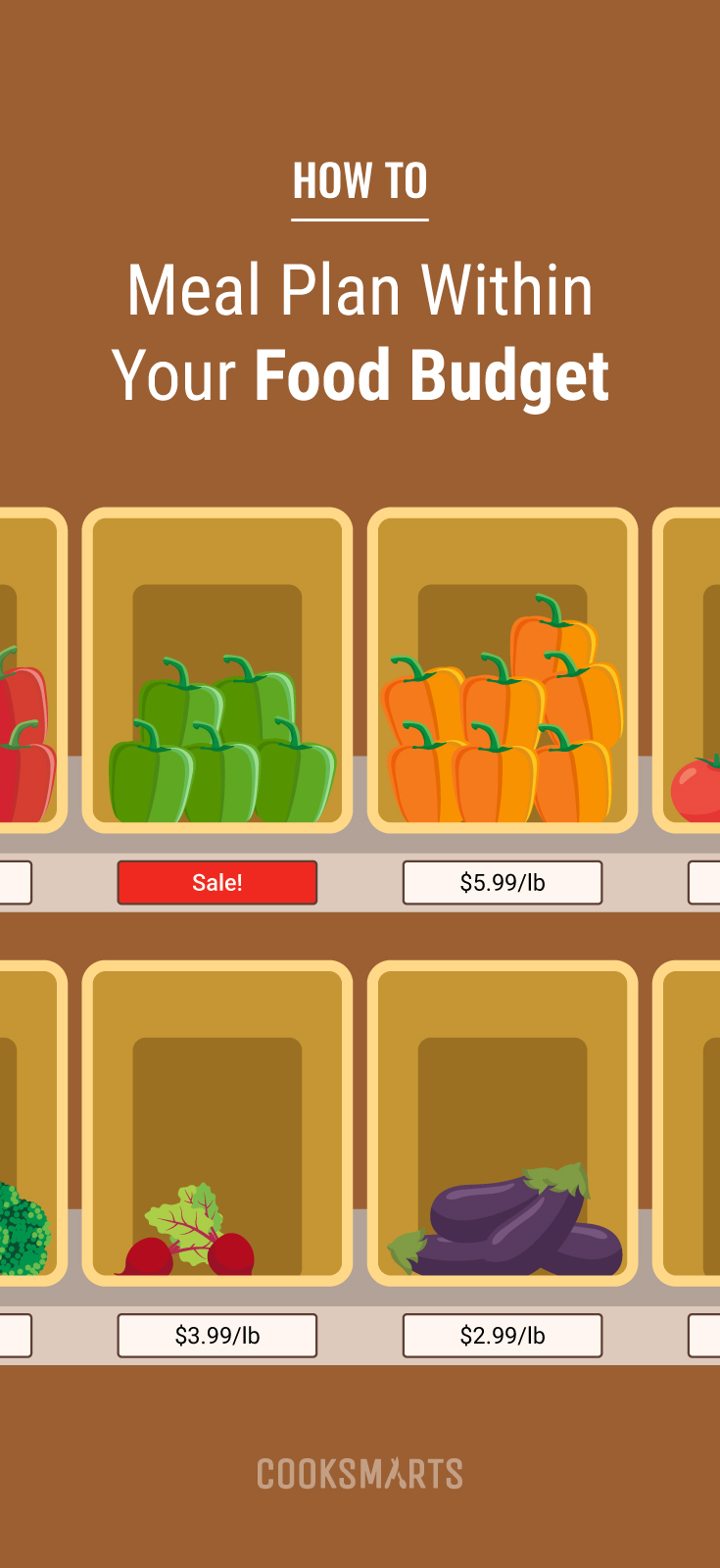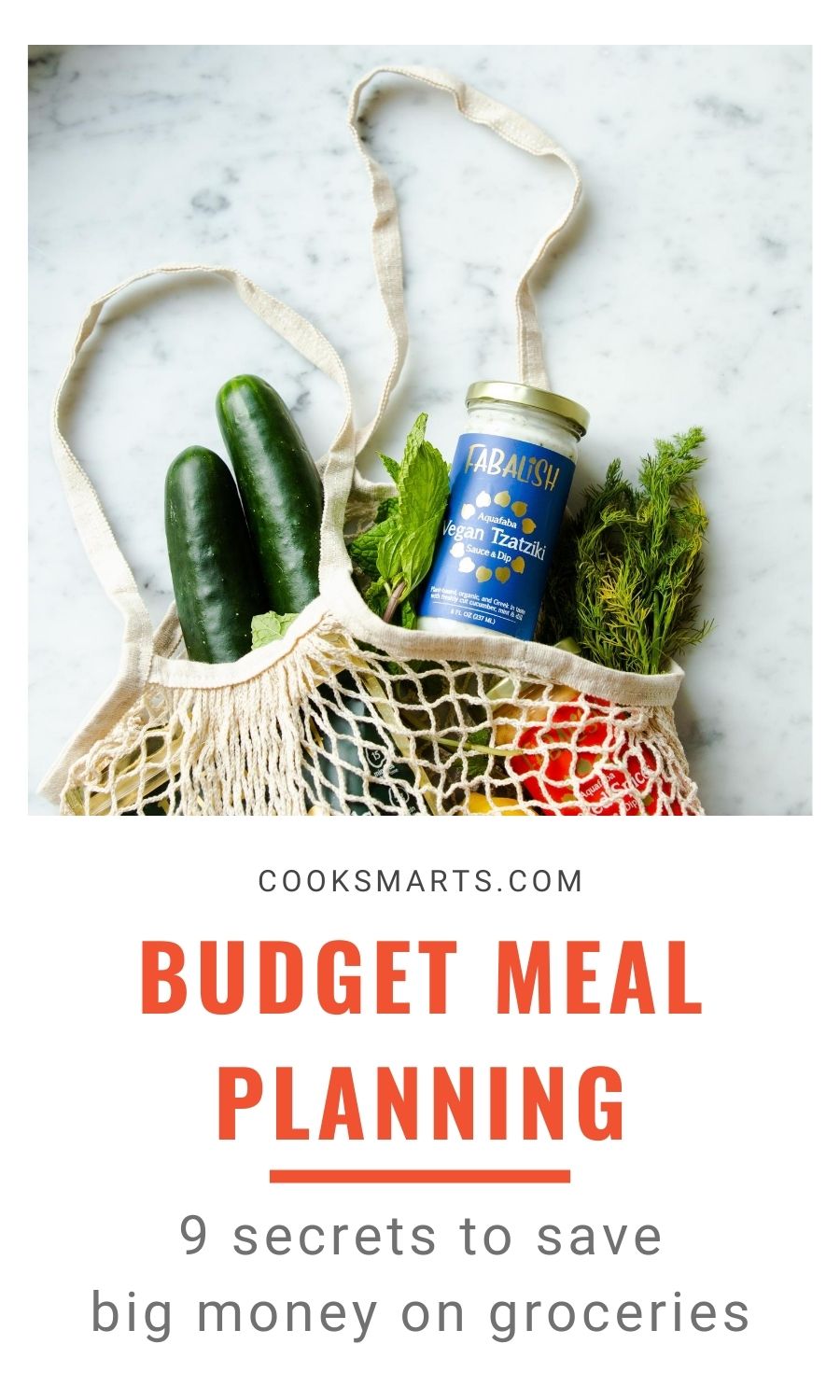9 Smart Methods for Budget Meal Planning
One of the best ways to save money is to meal plan on a budget. Learn our 9 secrets to keeping your food expenses in line with a simple plan!
While budgets can be kind of fun to create if you have an A-type personality, overspending and landing in a tight spot near the end of the month is never fun, even if you are the most laid back person. Luckily, meal planning is one of the best ways to stick to your budget and protect you from those “That’s all I have left in my bank account?!?” scares.
We are excited to teach you 9 easy ways to meal plan within your budget so you can stay in the black.
Budget Meal Planning Tips

Learn how to meal plan while on a budget with these 9 simple tips!
#1 – Don’t Have Unpleasant Surprises
Making a meal plan for each week forces you to be organized in a way that really pays off. By setting a budget and creating a plan of when you will cook at home versus when you will eat out (hopefully infrequently!), you won’t end up surprised at how many meals were charged to your credit card when you pay the monthly bills.
When you use a meal plan service like ours, you can select meals to make for the week and get a grocery list that will keep you on track in the endless food aisles. Having the plan and established routine really does make staying within your budget infinitely easier!
You can also use apps / software to help you monitor your budget, like Mint, EveryDollar, PocketGuard, YNAB (You Need a Budget), Goodbudget, or Wally.
#2 – Save on Groceries
Walking into a grocery store without a plan is just as bad as shopping while famished. You’ll end up throwing things in your cart, instead of making the best choice for your buck.
When you make a meal plan ahead of time, you can take advantage of several opportunities to cut your grocery bill. Taking coupons and seasonal produce into consideration, you can choose dishes around foods that you know will be on sale. It’s also a good idea to sign up for your local grocery store’s mailing list so you’re always in the know for what sales are on the horizon. (Get ahead and know in advance which seasonal produce to look for with our infographic guides:)
Vegetables by Month (US)
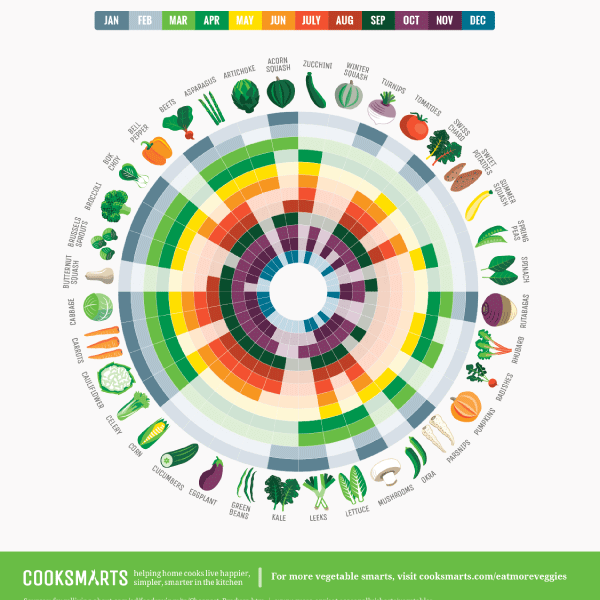
Enjoy Veggies in their Seasonal Peak
Vegetables by Month: enjoy veggies at their most flavorful and least expensive!
I acknowledge by requesting this info, I'll be added to Cook Smarts' newsletter list. I can unsubscribe at any time.
Discover what veggies are in season each month with this Vegetables by Month Chart
Fruits by Month (US)
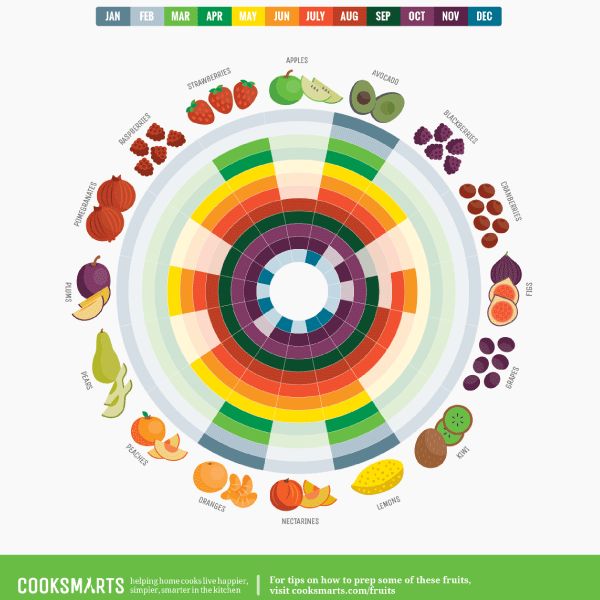
Enjoy the Tastiest Fruits
Save money and enjoy seasonal peak fruits with our Fruits by Month guide.
I acknowledge by requesting this info, I'll be added to Cook Smarts' newsletter list. I can unsubscribe at any time.
Enjoy fruits at their peak every month with this Fruits by Month Chart
Additionally, when you are sitting down to make your meal plan for the week, you can go through your pantry, fridge, and freezer to see what you should use up. When you build your recipes around your list of ‘to-use’ items, you can significantly cut your grocery bill that week and make sure you never buy repeats.
#3 – Make Smart Protein Choices
Although the USDA recommends eating 5.5 oz of protein each day, the average American eats about 10 oz of meat and poultry every single day. Unfortunately, this trend is not without a huge effect on your bank account (and the environment!).
To keep your food budget in check and your meals within the general health guidelines, you can easily incorporate budget-saving ingredients that have great nutritional value and are hearty enough to keep you satisfied for hours. Try substituting inexpensive proteins (tofu, canned beans, lentils, canned fish, and eggs) a couple times a week and see the difference it makes on your grocery bills. #MeatlessMondays are successful for a reason!
Additionally, you can bulk up your meals with whole grains, which are cheaper, full of dietary fiber, and make meals more filling. Learn more about filling vegetarian proteins and whole grains with our guides here:
Guide to Vegetarian Protein Sources
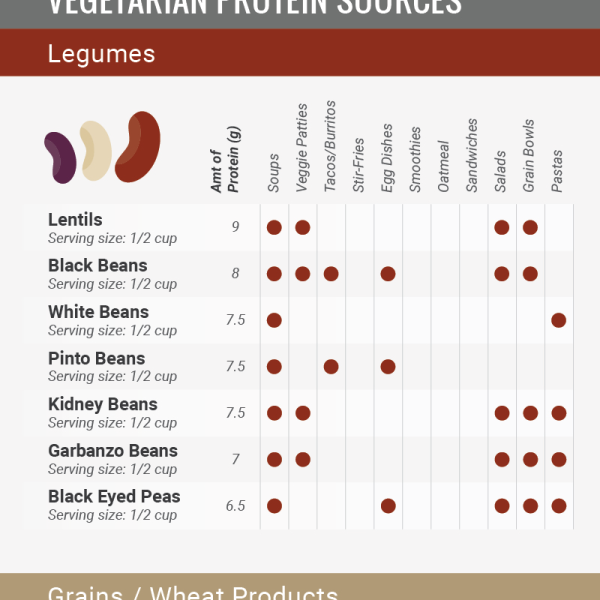
Eat #Meatless
Guide to Vegetarian Proteins: enjoy satisfying and tasty meatless meals.
I acknowledge by requesting this info, I'll be added to Cook Smarts' newsletter list. I can unsubscribe at any time.
Get your daily requirement of protein with a variety of vegetarian protein sources, which usually contain more fiber and cost less than animal protein sources.
Guide to Cooking with Whole Grains
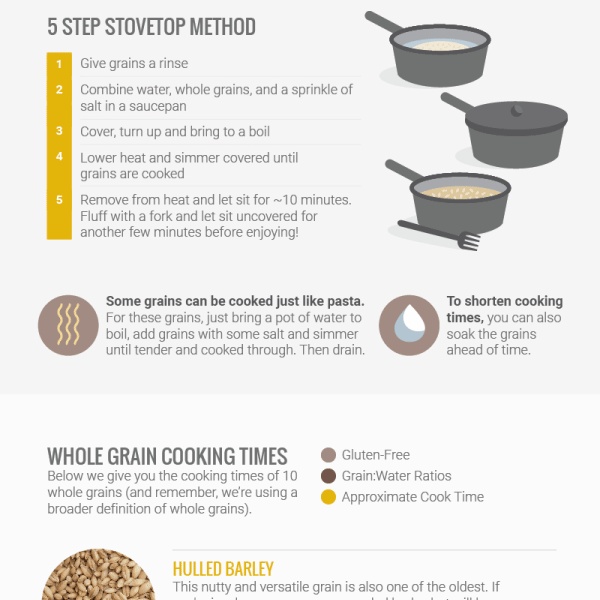
Make Whole Grains a Healthy Part of Your Diet
Learn about whole grains, including how to cook and store them!
I acknowledge by requesting this info, I'll be added to Cook Smarts' newsletter list. I can unsubscribe at any time.
Learn more about this food group and how to make whole grains a healthy part of your diet.
#4 – Substitute Ingredients
Even if a recipe contains a specialty ingredient, that doesn’t mean you have to use it. It’s easy to swap out a pricey item or a jar of something you won’t use a lot. Also, it’s usually okay to skip an ingredient entirely if it doesn’t necessarily “make” the dish! For example, a sprig of rosemary may taste nice on that chicken breast, but if you can do without, you can save money forgoing it.
Most times, recipes will still taste great despite the alterations, but if you want the advice of recipe pros, check out our Ingredient Substitution Guide:
Cooking Ingredient Substitutions Guide
When you can't find an ingredient or want to use what you have in your kitchen, our substitution guide will help you make an easy and tasty swap!
Can't find it? Can't afford it?
Our substitution guide provides easy and tasty swaps for your cooking needs.
I acknowledge by requesting this info, I'll be added to Cook Smarts' newsletter list. I can unsubscribe at any time.
#5 – Make Multiple Meals in One Batch
When you meal plan, you can plan to have leftovers. By simply doubling a recipe (or using customizable serving quantities with our service!), you can cook once and eat multiple times. Whether you are all about those lunch leftovers or prefer to freeze leftovers so you can spread out how often you eat the same meal, making bigger batches of food will save you money every time. Learn more about the brilliance of freezer meals here.
#6 – Get Your Bulk Shopping On
Having favorite meals provides a great opportunity for savings. You see, when you know what you and your family likes to eat, it makes buying bulk food items the most practical option because you won’t have any problem using up the large quantities. If the kids are excited about Taco Tuesdays or your roommates love scheduling pasta and wine dinners, you can buy the key ingredients in bulk, without the fear of anything going bad.
Bulk shopping can also be useful for batch cooking specific ingredients that you can freeze and then use across several different meals. For example, buy a bunch of rice, oats, or quinoa when it’s on sale, cook it up, freeze it, and then use it for meals over the next 4-6 months. Another great example is if you see pork shoulder on sale. From it, you can make a big batch of pulled pork, which can be used to quickly *pull* together so many dishes like sandwiches, quesadillas, tacos, fried rice, soups, etc.
To learn more about freezing foods and their specific freezer shelf-life, check out our article and infographic here.
#7 – Plan for Stir-Fries
If you learn how to make stir-fry, you can easily use up any odds and ends at the end of the week. Since stir-frying is perfect for combining any random assortments of proteins and veggies, you can enjoy a variety of delicious dishes while making sure your leftover ingredients don’t go to waste. If you want to be able to put that last bit of tofu or broccoli to use, learn the basics in this 2-minute video:
How to Make a Stir-Fry
Stir-frying is a great way to bring together just about any vegetable and protein combination in a fast and tasty way.
For a more detailed guide, download and print our infographic Guide to Stir-Frying to hang on your fridge here:
Guide to Stir-Frying
This guide to stir-frying teaches the basics of this quick and healthy cooking method.
Stir-Fry Made Easy
Master the basics of stir-frying and get 26 easy, delicious stir-fry combos with this guide!
#8 – Have a Back-Up Plan
Unexpected events are inevitable, but you can also plan for them! All you need to do is know your favorite, budget-friendly recipes and keep grocery lists for these meals where you can access them on your phone (think Google Drive). That way, when you don’t have time to meal plan or the in-laws are unexpectedly coming to dinner and you don’t want to try a new recipe like you had planned, you’ll be ready to shop for your favorites and not resort to take-out or spending money at a restaurant.
#9 – Use an Affordable Meal Plan Service
It may be counterintuitive to pay for a meal plan, but an inexpensive service can actually save you money while also saving you loads of time.
Our award winning meal plan service (voted #1 by Lifehacker) can help steer you away from unaffordable (and unhealthy takeout). If it saves you and your family from eating out, it will more than pay for itself in just a few meals. Cook Smarts is also packed with all of these additional features to make getting dinner on the table easy. With our service, you’ll be applying all eight of the money saving methods we mentioned above without any extra work! You just can’t beat it.
You can unlock our entire archive of food waste-reducing meal plans and deliciously affordable recipes with a free 30 day trial and see if our service is what your budgeting plan needs.
Whether you use a service to help you plan or forge ahead making your own meal plans, they will undoubtedly save you money and help you stay on budget. Try implementing even 3 of our budget tips and see how it affects your bills at the end of the month.
Do you have any other money-saving tricks you use to lower food expenses? Let us know in the comments below!
As always, we’re here to help you live your best life in the kitchen and provide delicious memories for you and your family. If you sign up for our newsletter below, we’ll send you great cooking tips and resources that will help you raise your kitchen IQ and cook with confidence.
